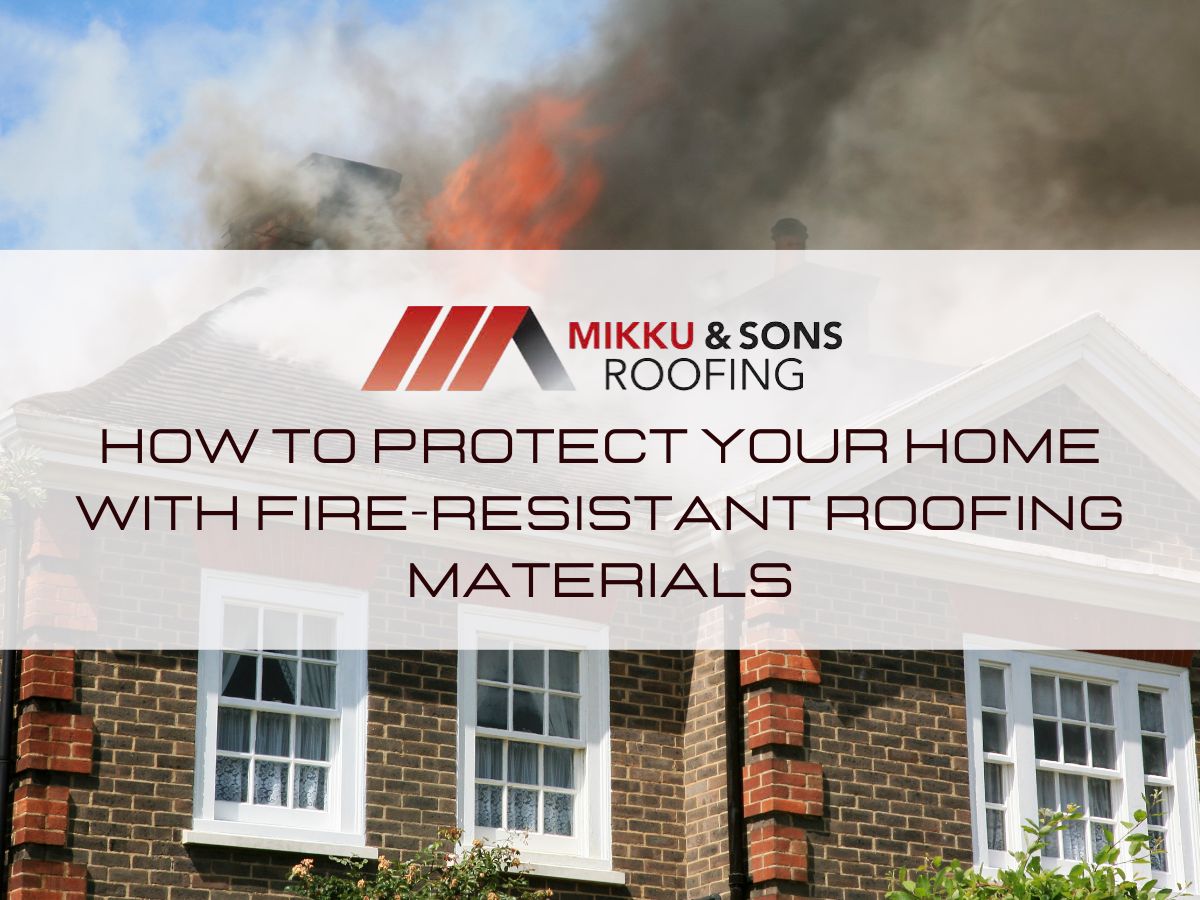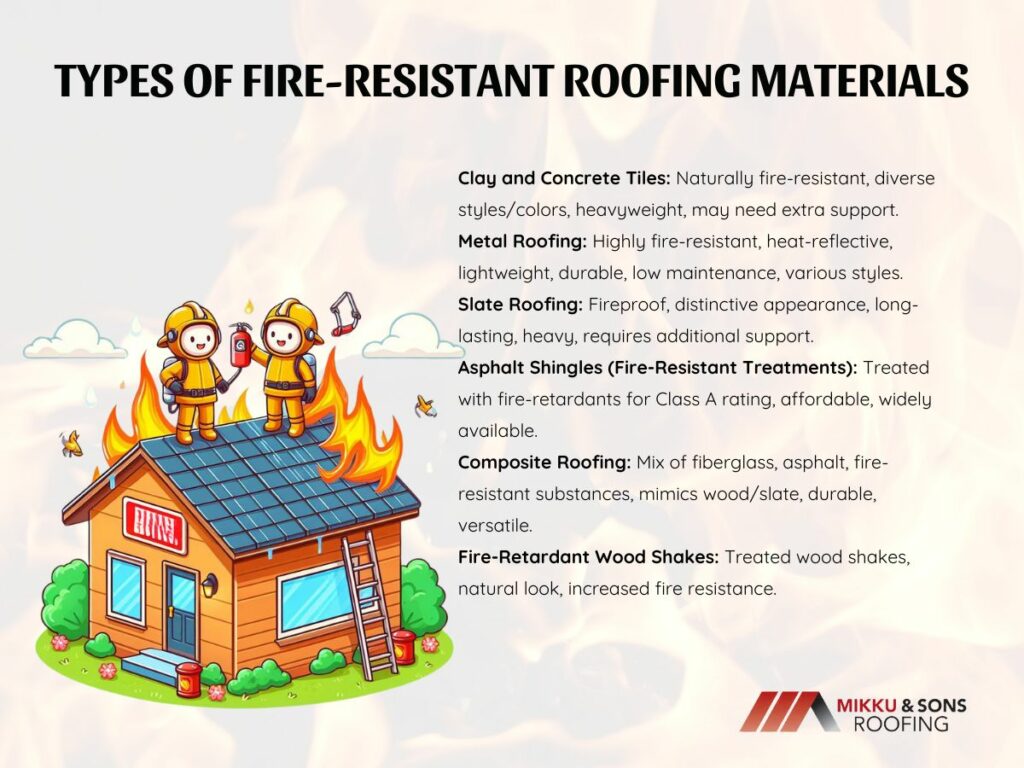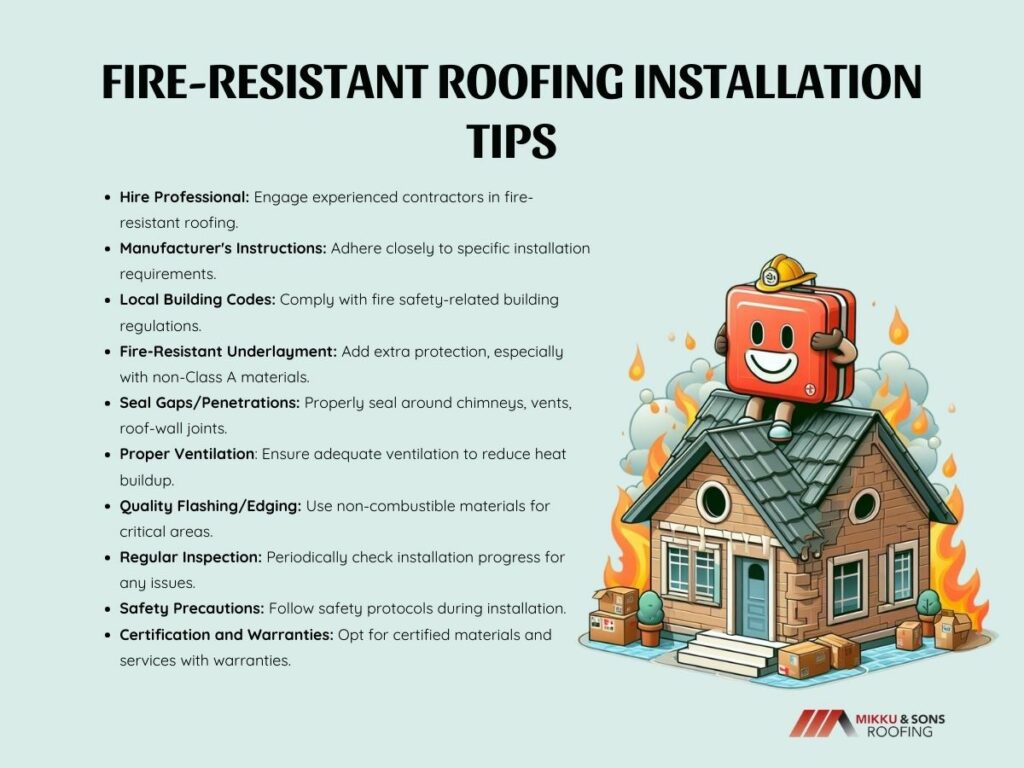

In areas prone to wildfires or other fire-related risks, choosing the right roofing materials is essential for protecting your home. Fire-resistant roofing provides a vital shield against fires, often meeting regional building codes and offering long-term financial benefits.
This article discusses the significance of fire-resistant roofing, reviews different material options, and offers guidance on cost, installation, and maintenance considerations. By adopting these measures, homeowners can enhance their home's safety and durability, ensuring a safer living environment.
Roofing is one of the most vulnerable parts of a house during a fire. Embers can land on the roof and ignite the material, leading to a potentially devastating house fire. Fire-resistant roofing materials are designed to withstand this kind of exposure, providing a critical line of defense against fire.
In areas prone to wildfires, using fire-resistant roofing is not just a recommendation; it's often a requirement by local building codes. Homeowners benefit financially as many insurance companies offer lower premiums for homes with fire-resistant roofs, recognizing the reduced risk of fire damage.
Additionally, these roofing materials can enhance the overall value of a property, making it a desirable feature in the real estate market. Beyond individual benefits, fire-resistant roofs contribute to community safety by preventing the spread of fires to neighboring properties.
Several types of roofing materials are recognized for their fire-resistant properties. Each offers unique benefits and characteristics suitable for different preferences and requirements. Here are some of the most commonly used fire-resistant roofing materials:

These are naturally fire-resistant and do not combust, making them a popular choice in fire-prone areas. They come in various styles and colors, allowing for aesthetic flexibility. Their heavyweight, however, may require additional structural support.
Metal roofs are highly fire-resistant and also reflect heat, which can help in cooling homes in hot climates. They are lightweight, durable, and low maintenance, available in a variety of styles to suit different architectural designs.
Slate is a natural stone material that is completely fireproof and offers a high level of protection. It's also known for its distinctive appearance and longevity. However, slate is one of the heaviest roofing materials and may require additional structural support.
Some asphalt shingles are treated with fire-retardant chemicals, allowing them to achieve a Class A fire rating. They are affordable and widely available, making them a popular choice for many homeowners.
This type of roofing is made from a mixture of materials, including fiberglass, asphalt, and other fire-resistant substances. Composite roofs can mimic the look of wood or slate and offer good fire resistance along with durability and versatility.
While traditional wood shakes are flammable, there are now treated wood shakes available that have been impregnated with fire-retardant chemicals. These treated shakes offer a more natural look while still providing increased fire resistance.
Each of these materials offers a balance of fire resistance, aesthetic appeal, longevity, and cost, allowing homeowners to choose the best option that suits their specific needs and preferences. It's important to consider factors like the local climate, architectural style of the home, weight-bearing capacity of the structure, and budget when selecting a fire-resistant roofing material.
When choosing fire-resistant roofing materials for your home, several important factors should be considered to ensure safety, compliance, and satisfaction with your choice. Here are key considerations:
By taking into account these factors, you can make a well-informed decision that balances safety, compliance, aesthetics, and financial considerations, ensuring a roofing choice that meets your needs and provides peace of mind.
Proper installation of fire-resistant roofing is critical to ensure its effectiveness and longevity. Here are some essential tips to consider during the installation process:

Always engage a professional roofing contractor, preferably one with experience in installing fire-resistant materials. Proper installation is key to ensuring the roof's effectiveness in protecting against fires.
Each roofing material has specific installation requirements. It's crucial that your contractor follows the manufacturer's instructions closely to ensure optimal performance.
Ensure that the installation complies with local building codes and regulations, particularly those relating to fire safety.
A fire-resistant underlayment adds an extra layer of protection. This is especially important if you're using a material that isn't Class A fire-rated on its own.
Make sure that all gaps, joints, and penetrations are properly sealed. This includes areas around chimneys, vents, and where the roof meets the walls. Proper sealing helps prevent embers from entering and starting a fire.
Ensure adequate ventilation in your roofing system. Good ventilation helps reduce heat buildup under the roof, which can be a fire hazard.
Use high-quality, non-combustible materials for flashing and edging. These areas are critical for preventing water intrusion and also for fire protection.
Periodically inspect the work as it progresses. This helps identify and rectify any installation issues early, ensuring the integrity of the roof.
Ensure that the installation crew follows proper safety protocols to prevent accidents during installation.
Use materials and services that come with certifications and warranties. This provides assurance about the quality of the materials and workmanship.
By following these installation tips, you can ensure that your fire-resistant roofing is installed correctly, providing maximum protection for your home.
Maintaining fire-resistant roofing materials involves regular inspections, at least twice a year and after severe weather, to check for and repair any damage. Cleaning the roof to remove debris like leaves and branches is crucial to prevent fire hazards and ensure proper water drainage.
Special care should be taken to remove moss or algae in damp climates, as these can retain moisture and damage the roof. Periodic professional inspections are beneficial for identifying overlooked issues and advising on repairs.
It's also important to keep gutters and downspouts clear to prevent water damage and to ensure that flashing and seals around roof penetrations are intact. For specific materials like treated wood shakes or certain tiles, following the manufacturer's maintenance guidelines is essential.
These practices are key to enhancing the longevity and effectiveness of fire-resistant roofing, offering lasting protection and peace of mind.
The cost of fire-resistant roofing materials varies, with factors like material type, quality, and fire rating affecting price. More durable and highly fire-resistant materials like slate and metal tend to be more expensive upfront but offer long-term savings through longevity and reduced maintenance.
Conversely, options like treated asphalt shingles are more budget-friendly but may have a shorter lifespan. Installation costs also vary, particularly for materials requiring specialized techniques.
Homeowners should consider the potential for lower insurance premiums and increased property value. While initial costs may be higher for some fire-resistant options, the safety benefits and long-term financial savings can make them a cost-effective choice.
Protecting your home with fire-resistant roofing materials is a crucial investment for safety and peace of mind. By choosing the right materials, considering factors such as fire rating, local codes, aesthetics, and cost, and ensuring proper installation and maintenance, homeowners can significantly enhance their home's defense against fire hazards.
While the initial cost may vary depending on the material, the long-term benefits of durability, lower insurance premiums, and increased property value make it a worthwhile investment. Regular maintenance further ensures the longevity and effectiveness of the roofing.
Ultimately, fire-resistant roofing is not just a practical choice but a proactive step towards safeguarding your home, your loved ones, and your investment.
